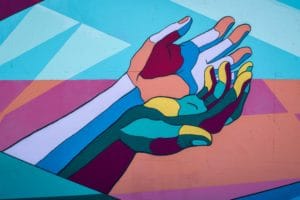Introduction
Heroes change because of a plan and not by chance. This week, we’re going to look at one of my favorite models for self-awareness and for spiritual health – The Enneagram (“any-a-gram”). This is a character-logical system made up of 9 core types and 27 sub types. This post is also titled, “Everything you need to know about the Enneagram for a good and safe start when using it.
The Enneagram System/Framework: How it works
If you want to grow in self-awareness and unleash your inner hero, try this amazing tool. As I mentioned before, it’s a framework where upon discovering your core type, you aren’t stuck in a box of characteristics. It’s a system with movement and includes psychological and spiritual work coming together.
Everyone has a core type but it’s more like a “specialization of the psyche.” Each person has qualities of the other types and this is why it can be quite difficult in the beginning when you’re trying to find YOU.
Some suggest nature is the cause of our personality type and other Enneagram experts think it’s related to the social environment we grew up in (nurture). With each type we’ll explore family of origin issues that may have a forming impact on the personality in its early stages.
The Enneagram system helps us identify the specific patterns of our character and our fixations (the things we get stuck on), defenses (how we protect our fragile image), virtues (the best part of us), and a path to growth.
Centers of Intelligence
Each of the nine types are arranged in a circle and sit together in three groups. This is usually the first way that enneagram experts type their clients. Each type is categorized in one of three types of intelligence: body (gut/intuition), heart (feeling), and head (thinking). It’s not that you use one of these more. It’s really the energy and feel of the intelligence center that gives YOU away.
Each center has its risks and rewards, uses and abuses. Let’s start with the body center which includes our “motor” center (types 8,9,1). These are the types that can lead to right action, but misusing this intelligence can lead to impulsive behavior or inertia [ref]Chestnut, Beatrice, “The Complete Enneagram”, 18).[/ref]
Those of the heart center types (points 2,3, and 4), regulate on a feeling basis: expressing and experiencing their emotions first before acting and thinking. When it’s functioning well, they can connect with others through compassion, empathy, and creative expression. However, like all centers it can be abused and lead to “over-sensitivity, insensitivity, or emotional manipulation.” [ref]Chestnut, Beatrice, 18[/ref]
Finally, those of the head center types (5, 6, and 7) are regulated on a thinking basis. They experience thoughts, beliefs, and other analytical ability first before emotions and actions. Brilliant and sharp thinkers with wit and intelligence, these types can become paralyzed in overthinking the situation.
This first step is key. Get this part of the Enneagram wrong and its likely you’ll misunderstand most of it. Try to look carefully at the way in which you operate in the world. Do you think first act second and feel last (type 7)? Or feel first, think second, and act last (Type 4 with a 5 wing – we’ll get into wings down below).
The Circle, the Triangle, the arrows…what do they all mean?
Some experts have noted that you can break up the Enneagram into symbolic elements. The first one is the circle. Each of these symbols are seen as universal laws, combining the best of ancient philosophers, arithmetic, and geometry. Each type is placed around a circle in a clockwise order from 1 (the Reformer) to 9 (The Peacemaker). You could also think of Enneagram as “drawing of nine.” Though we are ultimately unsure of it’s exact origins, experts such as Oscar Ichazo, Claudio Naranjo and other contemporaries believe it to be thousands of years old.
So what does the circle represent? The circle symbolizes the “law of one” and “unity.” This is why each type can seem like the others. Each of them are in one another.
Whatever it means to be spiritual, it isn’t less than the recognition that each of us are more alike than different.
The Circle also represents eternity. We live in a world that goes on and on and these laws of self-awareness and returning to “presence” follows a unified vision of human growth and transformation.
Every circle represents a cycle and closed-ness to it. It clearly demarcated a specific process and area. In the context of the Enneagram, the circle represents the boundaries of an individual human being. The inside of the circle represents our limited nature and specific personality. It celebrates our limited scope of human expression.
While the inside represents the finite nature of personality, the outside represents the “infinite” and transcendent. The outside of the circle represents those things beyond our comprehension. Not only in terms of knowledge in the general sense, but outside our conditioned personality.
Triangle
Second, you may have also noticed a core triangle at the center of the Enneagram. This inner triangle represents what experts call “the Law of Three.” The Law of three is also a pattern in literature, religion and a solid preacher’s talk (i.e. “the 3-point sermon).
The triangle has historically represented the laws that govern creation. You have an active force, a passive force, and a reconciling force. Physicists have noted this and renamed them “Action, reaction, and resultant.” [ref]
Schneider, Michael S. A Beginner’s Guide to Constructing the Universe: The Mathematical Archetypes of Nature, Art, and Science. New York: Harper, 1994, 41. [/ref]. A good example of this in everyday language is that of a sailboat. The boat sits there passively, the wind is the active force, and the sail is reconciling (or neutral) force to catch the wind. When you have all three then you have movement.
The Enneagram takes this analogy in physics and says its true in our psychological and spiritual growth towards wholeness. When we want to change something about ourselves, albeit losing weight, getting better sleep, eating healthy foods, or finding healing with our childhood trauma, we often get stuck in acting and reacting and need a third element to make the change complete. We feel momentum then push-back from within.
Michael Schneider noted this and stated,
“opposites are balanced by a third, mediating element that reconciles a conflict, healing the split of polarity and transforming separate parts into a complete and successful whole.” [ref] Ibid.[/ref].
This has historically been the therapist reconciling conflict between married couples (a neutral force – the sail). For thousands of years this was the Priest, reconciling people to their God and then reconciling the people to one another, settling disputes and promoting forgiveness as a neutral party between the offended and offender.
Today in our health conscious lifestyle, that’s your physician, between you (sail boat) and illness (wind), helping you to catch the salient features of your body and cooperate where willing (sail).
Not least, the law of three is seen throughout many spiritual traditions. In the Hindu faith, they have three gods (or if you’re a Jungian, three major archetypes) Brahma, the Creator, Vishnu, the Preserver and Shiva the Destroyer. At the heart of Christian Theology is the One God in Three persons: Father, Son, and Holy Spirit.
Perhaps the closest connection is the Buddhist concept of three poisons: ignorance/delusion, craving, and aversion. These three match the three points of the triangle on the enneagram drawing.
We all begin in ignorance and unconscious living, where our automatic instincts control us without our own self-awareness (point 9; top of the Enneagram, the Peacemaker). When as the hero of our own story, we are exposed – whether by circumstance or by reality – to some new unknown territory about ourselves, we avert and avoid due to fear (point 6; bottom left of the Enneagram; The Loyalist).
As we step on the edge of the unknown, our personality defaults rise up and our defense strategies are activated. While on the edge of the unknown we may crave success, material possessions, sex, money, power to avoid our selves.
Over time we create a persona (type 3; bottom right of the Enneagram; The Achiever) to mask our sense of deep spiritual poverty and defacing shame.
In order to unleash your inner hero, you need a framework for self-awareness and transformation that has movement and a direction of where to go.
The Enneagram is a profound tool for psychological change. With the law of three, our psychological work is advanced because it takes into account three forces for change: an advancing force, a resisting force, and a reconciling force that bring the other two together.
These are three necessary to bring any change into being. Threes (The Achiever) focus on actively doing while the Six point (The Loyalist) represents our resisting force with fear through doubting, questioning, and testing. Finally the ninth point (The Peacemaker), is our reconciling force bringing different ideas “together to create harmony and reach a consensus” (ibid 17).
With 3 core types including movement when stressed or healthy, 3 animal instincts (3 sub-types), and 3 centers of intelligence, the law of 3 produces 27 different personalities!
That beats the 5×5 personality temperament and the Myers-briggs (16 types).
The Law of Seven: What do the arrows mean?
While the circle represents our need for wholeness and the law of three represents the forces at work in our return to wholeness, the law of seven (image with arrows above) demonstrate the sequential steps one must take to that wholeness. In other words, this is the process by which we come back to living presently in our lives.
This “law of seven” is a cyclical process of transformation. Ancient mathematicians believed the number seven was a symbol of transformation [ref]Stevens, 2010[/ref]. Similar to the Buddhist concept of impermanence, the law of seven represents how the only constant is ironically, change.
In the Enneagram, our transformation is not a linear line, but 3 steps forward and 2 steps back. Transformation of our personality is also not just a back and forth movement but a side side to side 3 dimensional cycle. Each type when stressed, moves against the arrows of positive integration (change into who were were meant to be).
Like the Tao, the Jewish Halakah (meaning to walk) or the Christian notion of “being lead by the spirit” there is a graceful flow to our work in personality healing and transformation. The inner seven lines represent how we can move for better or worse against that “way” of individual change or “along the way” of our created design.
What do the Nine Points Symbolize?
In ancient Greece, philosophers called the number nine the “horizon” [ref]Chestnut, 50[/ref]. A.G.E. Black noted in the Enneagram diagram “the apex point 9 is unique” as “it represents the beginning and end of the cycle…that which gives the form of the whole. It is the source of the purpose that has to be realized.” [ref] Blake, 1997, quoted in Chestnut, 50[/ref].
Nine is a significant archetypal number through spiritual traditions and ancient stories. In the Kabbalah, there is a divine diagram portrayed as in the “Tree of Life” which has ten Sefirot – numbers that represent divine principles. 9 of the 10 Sefirot, correlate exactly with the Enneagram types.
The 10th, known as Keter is located above the diagram as it reflects the Messiah’s soul and transcends all known human personalities. [ref]Addison, Howard A. The Enneagram and the Kabbalah: Reading Your Soul. Woodstock, Vermont: Jewish Lights Publishing, 1998.[/ref]
Throughout this series we’ll be following Beatrice Chestnut’s recommendation to go through Home’s Poem in The Odyssey. Why? Surprisingly Odysseus, after his battles in Troy wants to travel back home to his wife Penelope. To do so, he travels through 9 lands which to my amazement follows the Enneagram types perfectly all the way around from 9 to 1 running counter-clockwise. We’ll notice how the strength of each type ends up contributing to their own downfall. Whether it is the peaceful harmony of the lotus-eaters (Land 9; The Peacemaker) or the glutinous cravings of the cyclops (Land 8; The Challenger, Type 8), each personality’s greatest “strength” can also be their Achilles heel and their undoing.
Wings
Popular in both business and in modern use of the Enneagram, Wings were not part of the original teachings of the Enneagram as taught by G.I. Gurdjieff, Oscar Ichazo, and Claudio Naranjo. Although, the original teachers of the Enneagram were most likely ancient, the idea of “Wings” as another sub-category has been a more modern development as followed by Don Richard Riso, Helen Palmer, Russ Hudson and Franciscan Priest Richard Rhor.
What are the wings? Wings add an additional subcategory or nuance to your number by noting the features of the numbers directly to the left and right of your core type. For instance, if you are a 9, then you wings are 8 and 1.
You cannot have wings to other numbers. Having these other characteristics of the 8 and 1 allow you to lean on new possibilities of those types for strength in a new situation. Wings also take into account immature to mature qualities.
Some Common examples: 8w7, 4w5, and 2w3
Charts [ref] Richard Rhor, The Enneagram, a Christian Perspective, 217[/ref]
| With 7 Wing | EIGHT | With 6 Wing |
| Explosive | Immature | Cold-blooded |
| Enterprising | Normal | Softly dominating |
| Magnanimous | Mature | Kind |
| With 3 Wing | FOUR | With 5 Wing |
| Manic | Immature | Cut off |
| Addicted to Success | Normal | Enigmatic |
| Winning | Mature | Creative |
| With 1 Wing | TWO | With 3 Wing |
| Judgmental | Immature | Calculating |
| Ambitious | Normal | Demanding |
| Encouraging | Mature | Friendly |

Brief Origins: Traditional and Controversial Origins on the Enneagram
My Story
I came across the Enneagram in 2013, during a CPE (Clinical Pastoral Education) residency at UCLA Ronald Reagan Hospital. It felt like a holy grail experience, making sense out of myself (at age 27), my upbringing, and my newly married wife. Over the years, I came across Carl Jung and Claudio Naranjo and suddenly the world opened up again with the Enneagram. With Naranjo’s attention to psychiatry (DSM categories), and sub-types, the Enneagram became profoundly specific and incredibly accurate. I began using it in my counseling and in discipleship within the Christian church.
All this would not have been possible without the modern recovery of this ancient system.
There are at least two main histories out there on the Enneagram. Suffice it to say, I’m only going to mention the Traditional history that Riso, Hudson, Palmer, and writers in the 21st century talk about. Then, I’ll share a video about a more Controversial take on the Enneagram origins. I’ll leave it to a longer post in the future, where I’ll try to tease this out more.
The Traditional History
Here’s the Traditional take. The Enneagram is said to have its origins in ancient Mesopotamia, some 4000 years ago and was passed down by way of “oral tradition” from “generation to generation.” [ref]Bennett, J.G. The Enneagram. Sherbourne: Combe Springs Press, 1974.[/ref]. After generations of time, it eventually landed in the hands of Sufism, a mystical sect of the Muslim faith tradition.
Until the 20th century, the Enneagram was best taught in the context of relationships and it was considered taboo to spread its information through writing. There are a few purest today, who believe that much of the typing problems with this system are due to too many people reading a book or taking an online-test. David Daniels, MD for instance holds to the Narrative Tradition – which believes typing is only possible as an “inside out” experience, listening to each other’s stories and motivations, not just behavior.
Three people have moved the Enneagram out of hiding and into the masses: G.I. Gurdieff, Oscar Ichazo, and Claudio Naranjo.
G.i. Gurdjieff was born in Russian Armenia in 1866. As a young man he traveled through the Middle East, Asia, Egypt and Africa. During that time he discovered several “secret societies” and “hermetic organizations” consisting of religious, philosophical, occult, political, and mystic.[ref] footnote 24 on pg 58/52[/ref]. When he began teaching in 1914, his “fourth way” challenged his student’s automatic personality functioning with what he called “self-knowledge.”
It is possible to stop being a machine, but for that it is necessary first of all to know the machine. A machine, a real machine, does not know itself and cannot know itself. When a machine knows itself it is then no longer a machine, at least, not such a machine as it was before. It already begins to be responsible for its actions.” [ref]Webb, James. The Harmonious Circle: The Lives and Work of G.I. Gurdjieff, P.D. Ouspensky, and their Followers. Boston: Shambhala, 1980, pg, 5. [/ref].
G.I. Gurdjieff
Gurdjieff also introduced the idea that each personality has a “chief feature” or “passion” which the whole personality was governed by. Like an “axle around which the ‘false personality’ revolves” [ref]Ibid., 19.[/ref], Gurdjieff believed that every person’s work is made up of “struggling against this chief fault.” This explains why we can’t have one set of rules for personality growth that applies to everyone.
What is useful for one is harmful for another. One man talks too much; he must learn to keep silent. Another man is silent when he ought to talk and he must learn to talk.”[ref]Ibid., 27[/ref].
G.i. gurdjieff
Gurdjieff developed the “Law of Seven” the Triangle, and the circle based upon his learning with the Sufi mystics. In the Traditional history, Gurdjieff was handed down both the ancient mathematics and all 9 personality types as well. However, in the real history, neither he nor Ichazo knew of the personality types. see below under “Controversial History.”
Oscar Ichazo
The Enneagram as you’ve seen it today is mostly due to the work of Oscar Ichazo. Beginning in the 1950s and 1960s, Ichazo taught in Chile this Enneagram for both spiritual and psychological transformation. Knowing well the Psychoanalytic tradition in psychology, Ichazo called this use of personality development through the Enneagram, “proto analysis.” Proto anaylsis was a process to bring human transformation about by methods based in science, reason, and rationality.
Furthermore, Ichazo’s method of proto analysis was not a religious quest in that the participant didn’t have to have faith in any doctrine, person, or creed. Rather he proposed that it studied “measures and analyzes the psyche.” He developed his Chilian school of personal transformation and called it, “The Arica School.” When asked what Arica during an interview in 1978, he stated,
Arica provides a new theory about the psyche; it provides a new method of scientific comprehension. And because Arica has this theory about the psyche, it has also evolved a method for making the psyche fulfilled and clear in the sense of being able to develop its potential to its fullest, if that is possible. That’s the aim of Arica—by having the complete and entire knowledge of our psyche, to enable ourselves to handle our problems faster, easier, and clearer.” [ref]Interviews with Oscar Ichazo: New York: Arica Institute Press, 1982, 91.[/ref].
Oscar Ichazo
What did he contribute to this field?
Ichazo added to Gurdjieff’s mechanical view with the examination of how people practice habitual “fixations,” which was where “our psyche has been wrongly predisposed.”[ref]30[/ref]. These fixations were caused by trauma or unmet emotional needs and completely colour our worldview. Thus, each personal has a core type which is a psyche constructed around this fixation in three types of intelligence. He called this a “Trifix.” (For example, my trifix is 4-5-8).
Ichazo helped his students observe their repeatable behaviors, challenged their automations, and find their fixations through a scientific, methodological and rational process.
And…Now for the more Controversial History
Ichazo believed later that he had received the enneagram from inspiration of the “divine.” Naranjo (see youtube video above), is actually the one who developed the 9 personalities types called, “ennea-types” not Ichazo.
According to Naranjo (above), the rumor that the enneagram is 1000s of years old is a fantasy.
As he quotes Oscar Wilde, “If you want an idea to be famous, simply say it came from a famous person.” Ichazo taught that his ideas came from the Sufi and were Mesopotamian in origin then later that it came to him by divine revelation.
So does this mean the traditional history is wrong….and the Enneagram isn’t thousands of years old? Read on…
More on Claudio Naranjo, MD, Psychiatrist
Born and raised in Chile, he became a psychiatrist in the US. He stumbled across the Enneagram as he trained directly under Oscar Ichazo at Arica, Chile in 1970. Naranjo created a group called SAT, or Seekers After Truth in Berkeley, California.
At this time, Naranjo requested the members keep the Enneagram confidential, until others published the information in personality and self-help literature in the 1980s [ref] Claudio Naranjo, Keynote address at the 2003 annual conference on the International Enneagram Association.[/ref]. Regarding those publications, by 1994, Helen Palmer, Riso and Molina had written their works for the larger audience.
Based upon his experience with the Enneagram through Oscar Ichazo, Naranjo said the following about their grasp of the Enneagram:
As is the case of several doctoral dissertations and enneagram course notes that had already come into my hands, the essential content of this echoed my own teaching in 1972, yet there was much in it I disagreed with. Furthermore, I thought it was bad taste for its authors to take the initiative of publishing something that would have been of negligible interest to its readers or publishers without its non-original component.”[ref]Naranjo, Claudio. “Character and Neurosis,” xxxi.[/ref]
Naranjo, Claudio. “Character and Neurosis,” xxxi.
He went on to give his current thoughts (in 1994 after the 80s resurgence of Enneagram writing) on Enneagram authors Palmer, Riso, and Molina.
Palmer’s I find the most informative, though I would have expected a greater original contribution; Risos’ is more original, but less accurate, so there is much he claims that I disagree with; Molina’s axiological slant has represented the most substantial contribution, I think, and he provides more nourishing reading matter than the others on the subject.[ref]Naranjo, Claudio. “Character and Neurosis,” xxxi.[/ref]
Claudio Naranjo
When learning the Enneagram, I think one should go to Claudio Naranjo first for many reasons.
- First, he was a direct student under Oscar Ichazo. He believed many popular writers on the Enneagram were off from the original teaching. He had the closest relationship with Oscar Ichazo and studied directly under him. As he states in his book “Character and Neurosis”
Just as I disapproved of the freedom that some of my ex-students took to offer enneagram courses outside of the SAT context (however justified they may have felt), I have felt critical toward the freedom that the first popularizers have taken to publish material that is part of a more comprehensive body of understanding and which neither Ichazo nor myself chose to bring into the open.” [ref]Naranjo, Claudio. “Character and Neurosis,” xxxi.[/ref]
As he explains in this video interview (posted above), Claudio developed the 9 types not Oscar Ichazo, nor G.I. Gurdjieff, or the sufis. Also, Claudio and Ichazo never intended it to get out there but sought to control the teachings. As he explains in this video, the only person he gave permission to teach the Enneagram was a Jesuit priest named Bob Ox. Riso then got the notes from Bob Ox …and he then assisted Richard Rhor.
When Naranjo asked him, “why aren’t you giving any credit to me when you use all my work? That’s considered unethical in the academic settings?” The response of Bob Ox the Jesuit priest was interesting, “we don’t believe in the right to property.”
Youtbe Video “The history of the Enneagram
It’s quite peculiar to me that Rhor does not once give credit to Naranjo on any of the Enneagram in his book.
It seems that he doesn’t believe in the “right to property” either.
Which leaves the reader to ask, “If Naranjo is right, does that mean most of the Enneagram concepts, books, and teaching belong to Naranjo with exclusive rights?”
Furthermore, is the traditional history simply a fabrication to give anyone the rights to use Naranjo’s work without paying tribute to him? I leave it to you to decide.
2. A second reason one should start with Claudio Naranjo when learning the Enneagram is his integration with psychiatry and psychotherapy. He was trained as a psychiatrist bringing his unique insights as a medically trained MD to the psychological framework. He also trained under Fritz Perls, the founder of Gestalt therapy. With his psychiatric perspective combined with his training under Perls’ existential emphasis provided rich soil for the joining of psychological growth with spiritual health.
3. The Third Reason is that Naranjo actually developed the 9 core personality types and 27 sub-types from his own experience in psychotherapy. As he states in the above video interview, he developed these personality classifications from “automatic writing.”
This means, the Enneagram as we have it today came to us in pieces.
It seems the sufis knew of the the circle, the law of seven, and mathematical symbolism.
G.I. Gurdjieff handed this down to Ichazo who added the 9 sins and fixations. But it was really Naranjo, not Ichazo who developed the terms “Type 9: The Peacemaker, Type 8 the Challenger, and so on.
These more popular classifications are not ancient, but the result of Naranjo’s work, that very few give him credit for.
4. Fourth, he didn’t teach the Enneagram as a stand-alone tool, but like Ichazo as one piece of a more expansive program of self-work: to help people understand their patterns and habits and how to transcend them. This keeps us from worshiping the Enneagram. Seeing it as one piece of a larger interdisciplinary effort for transformation is realistic and down to earth.
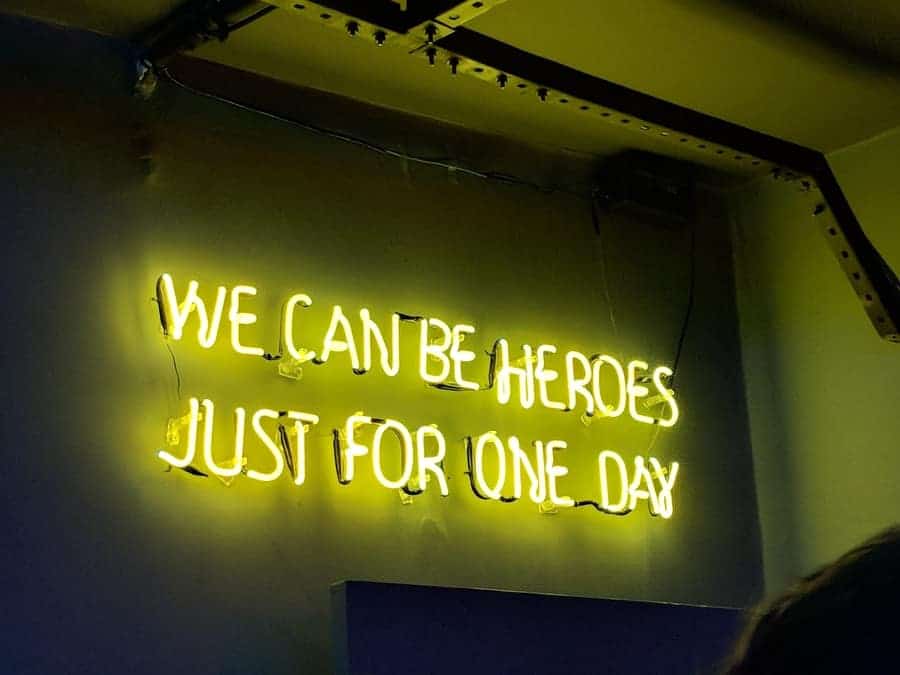
Enneagram Type Descriptions as Archetypes of the Hero
In this “how to be your own hero” series, we’ll be approaching each of the nine types as what Carl Jung called, “archetypes.” An archetype is a “pattern of instinctual behavior” that is exemplified throughout literature, film, religion, and poetry.
Humans are pretty much the same and operate under these basic and fundamental patterns. However, the best way to get to know those patterns is to see what images, stories, and symbols represent them. Each of the nine personalities are symbolized by a certain characterological pattern and we can discover them in nearly any situation since, “there are as many archetypes as there are situations.” [ref]Jung, Carl. “Archetypes and the Collective Unconscious.”[/ref]
What follows are brief descriptions of the Nine types of Heroes as observed in the Enneagram and the arts.
You have the potential to either rise as a victorious hero or fall as a failed attempt. It mainly depends on whether you can depart from the known (old patterns), face the unknown (your vices, sins, and coping patterns and shadow) and return home to Presence.
As described below, each type has a point of attention, their common patterns in thinking, feeling, and behaving. Lastly, I’ll include their core passion and how to interpret it.
The Body Types (9,8,1): Right Action or Inertia

Type 9: The Peacemaker Hero
The Nine hero focuses their attention on achieving harmony, and avoiding conflict. Their attention is usually on what others want, but cannot discern what their own agendas are. Their thinking and feeling lives tend to focus on getting along with others without “rocking the boat” or initiating conflict. Being at the center of the Body intelligence, they suppress their core feelings of anger.
Their coping style is dissociation from the anger and their own desires. In terms of behavior, they tend to soak up the agendas of others to avoid anything that might lead to a conflict for themselves. Their core passion is Laziness which doesn’t refer to activity, but to the “inaction of the psyche.” This refers to their inner feelings, sensations, or desires. This Laziness is like an inner “inertia.”
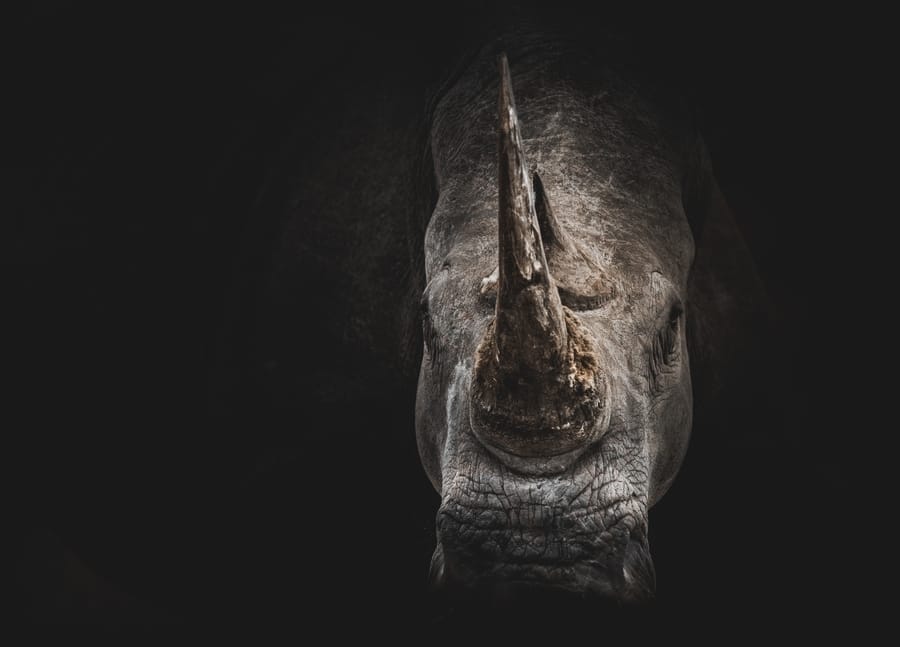
Type 8: The Challenger Hero
The attention of the Eight is naturally focused on power and control. While the the 9 under-do their anger and power, the Eight fully embraces it. The Challenger Hero assesses who has power and who doesn’t. They love big pictures and avoid the details. In terms of thinking and feeling, they have a strong access to anger and unconsciously avoid vulnerable feelings.
They can feel intimidating to others without meaning to. For their behavior patterns, an 8 brings a lot of energy. They can be workaholics without realizing their physical limits. Vulnerable feelings slow them down. Their passion is Lust for excess, intensity, for anything that stimulates. This isn’t necessarily hedonism, but filling up their inner emptiness through physical gratification.
Type 1: The Reformer Hero
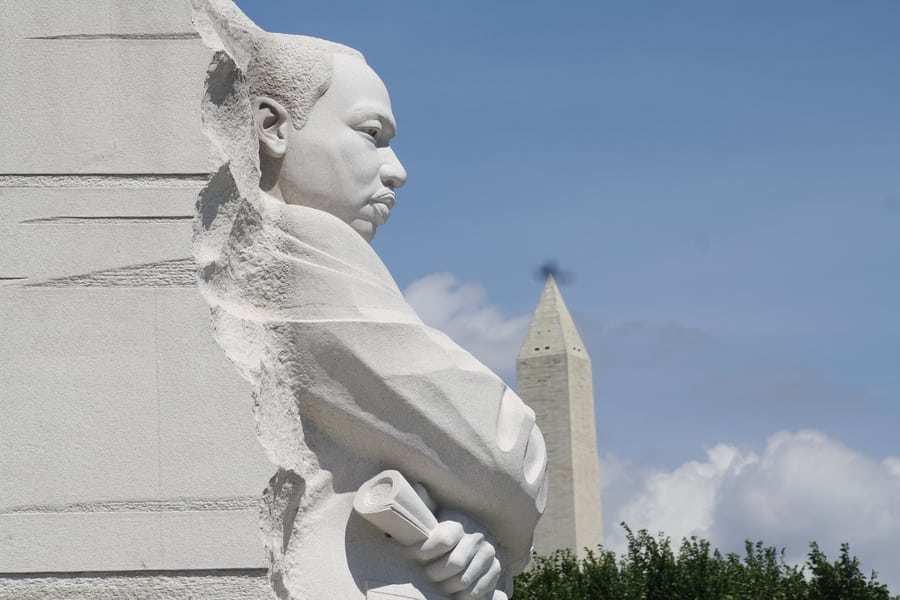
Similar to Freud’s Superego, this type of hero has a natural inclination towards judgment and criticism of others because they are so strongly judgemental of themselves. Their focus is on noticing error (according to what they define as error) to determine right, wrong, rules and structure. Part of the anger triad, they tend to feel irritation and resentment (restrained anger). 1s believe there’s a right way to do things and that we should all want what is perfect. Their behavior can seem rigid and highly structured. They rely upon ritual and repetitive forms of doing [ref]chestnut, 21[/ref]. They are reliable, hardworking, ethical, and follow the rules. Their passion is Anger, but in a repressed form of resentment.
Head Types (7,6,5)
Type 7: The Enthusiast Hero

This is your optimistic and exuberant eternal child. They tend to focus on re-framing all negatives into positives. They have a highly fast thinking life. They appear quick and make many mental associations across disciplines. But emotionally they tend to avoid sadness (type 4 the Artist go to place). As one 7 put it, “why feel pain if you can feel happy instead?” In terms of behavior they are fast-paced, innovative, and highly active. They tend to travel a lot. Their passion is “Gluttony” – which most think refers to food, but according to the Enneagram it refers to all types of pleasure. As Chestnut mentions Gluttony refers to “an excessive indulgence in consuming whatever brings pleasure.” [ref]chestnut, 21[/ref].
Type 6: The Loyal Hero

This Loyal hero is driven by fear and tends to think about what might go wrong and how to prepare for that eventuality. If you watch them closely, you may notice their eyes scanning for threats. They tend to hold up the false reality of false fear. Their deepest unmet longing is to be able to fully trust themselves, others, and their environment. 6s see the world as unstable, unpredictable and a dangerous place. Within that world, they say, “I must find meaning, stability and support. Often their sub-type “Strength/Beauty” (sexual-counter-type) is often confused for an 8, the Challenger.
Type 5: The Investigator Hero
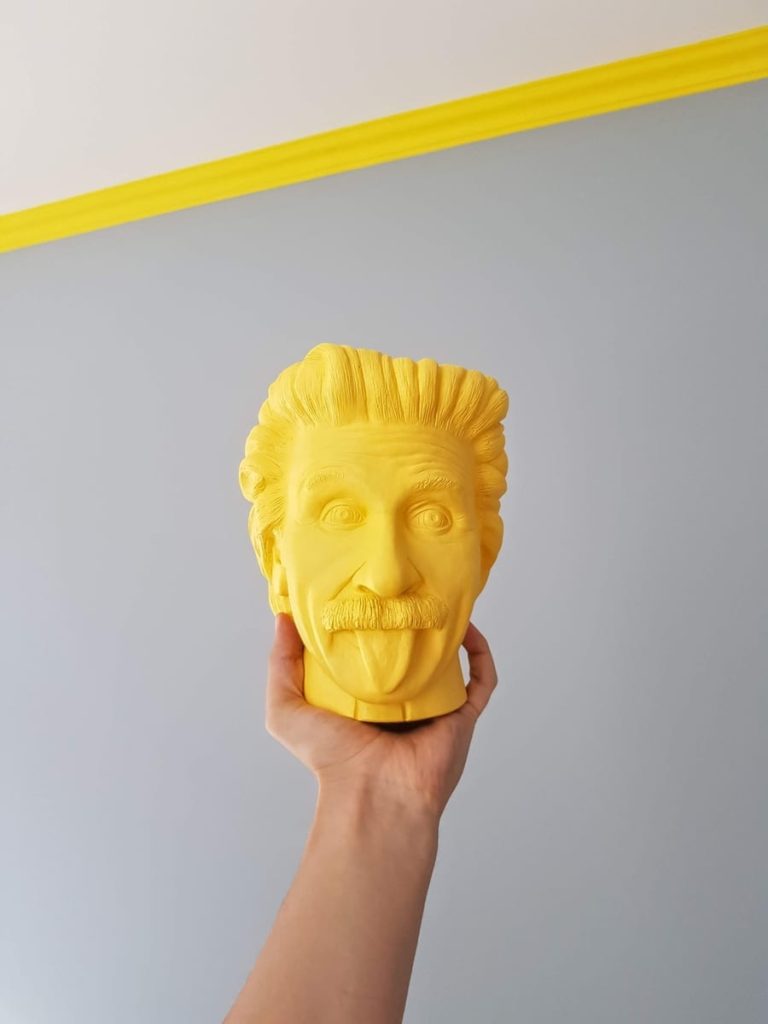
The Investigator Hero-to-be wants to absorb data, knowledge, and research becoming highly cerebral, even emotionally detached and “self-contained” [ref] Ginger Lapid-Bogda, “The Art of Typing: Powerful Tools for Enneagram Typing,” The Enneagram Business Press, 2018, 16.[/ref]Their deepest unmet longing is to experience and fully understand life at all levels, mental, emotional and physical. They see the world’s resources as highly scarce called Avarice. In their heart they say, “I must conserve my time, energy, and knowledge or I will be entirely depleted.” Their ideal image of themselves is to be knowledgeable and autonomous, never emotional or transparent. Their primary ego defense is isolation.
The Heart Types (4,3, and 2)
Type 4: The Artist Hero

The Artist Hero-to-be lives by introjection – believing that they are the main problem and not others. At their default, they live with a false reality of false deficiency, meaning they tend to see what’s missing in a world and not what’s actually there. Part of the shame based triad (2,3,4), they see the world as having a profound despair that comes from out lack of deep connections. In their heart they say, “I must re-establish these.” Their deepest unmet longing is to live a deep, purposeful, and emotionally balanced life. They avoid rejection and feeling not good enough. Their passion is that envy. Envy is not to want what others have at their expense but at the expense of their own self-harm in introjection. They are the archetype of the Shadow – the instinctual pattern in all of us that represents our unowned and unloved capacities. Their ideal image of themselves is what Bogda calls, “The Original Person.” Always creative and authentic and never ordinary or boring.
Type 3: The Achiever Hero

The Achiever Hero-to-be desire respect from others for being successful and never want to be shamed. They are highly charismatic, confident, and are the archetype of the persona. Their sin is deceit – feeling they must do everything possible to appear successful while hiding parts of themselves that do not conform to their image. They see the world as lacking order and flow to how things could work. This heart type says, “I must organize and plan to make things happen and get results.” [ref] Ibid., 12[/ref]. Their ideal image of themselves is to always appear professional and competent by never being idle or inadequate. Often this type is confused with a 7 or a Self-Preservation 4.
Type 2: The Helper Hero

The Helper Hero-to-be wants to be liked, noticed, and loved by those who need them. They give to get. Part of the shame triad, their deepest unmet longing is to feel a deep and firm sense of self-worth that is not dependent on how others respond. They thirst for appreciation and avoid anything that would make them feel unworthy or unlovable. Their ideal self-image is that of the “Loving person” who is always thoughtful and generous; never selfish or insensitive. They perform regression in their default state – hiding or suppressing unknowingly their own needs from others. They tend to gain acceptance through flattery. They see the world as full of suffering and in their need. In their heart, they say, “I must help alleviate the world’s suffering.” [ref] Ibid., 10 [/ref].
How to Use the Enneagram for Growth and Self-Awareness

As mentioned in the section on “Triangle,” we noted that the 9 (top point), the 3 (far right side) and the 6 (far left) points represent how ignorance (9), craving/desire (3), and aversion (6) can create a perfect trap.
Yet, it is in the Triangle we also see a hope for transformation. Represented by the 3 point, we need to first dis-identify from our default personality by developing an inner witness. Such practices as Centering prayer, meditation, and Focused therapy (psycho-somatic counseling) help us separate from our instincts, patterns, and habits that run on automatic. Much like a machine, our personality runs on the power of unconscious habits and thus limits our options.
If anything, the Enneagram confronts us and shows us our default settings and how to create more options.
Next, we can surrender to fear and emotional suffering that comes with loosening our defenses (the 6 point). Fear will come when you question your old habits as you face the unknown.
Although we don’t want to talk about it, at some level we all know that there is real suffering involved when hoping to grow. We transcend our former capacity for God and for personality growth when we integrate all the parts of us we can’t stand. At times it feels like you’re breaking the hard shell of something and what comes out is ugly, vulnerable and dark.
Yet when we look at it with the light of awareness and truth, it miraculously changes.
Finally, the last movement is back to the 9 point, when we actively work toward “transcendence and union” with God.
Transformation does not come all at once, but through the grit, grind, and grace we experience a steady change.
The goal of the Enneagram is to release what or rather, “who” is already there: the Self or our Presence. By working on these personality habits, noticing them, dis-identifying with them, we create a new space. The Self – calm, clear, connected, centered, creative, courageous, having capacity of choice, curious, compassionate Self – takes the lead in our lives. Personality/psychological work is the grit and grind of daily self-development.
Psychological work involves working on our ego defenses, weakening them, so that the Self can emerge (the spiritual work). Psychological work is about working on ourselves to become what we are not. Spiritual work involves letting go of what we think is really us, so that who we already are can manifest.
Animal Instincts and Sub-types
If you look at this picture closely, you’ll notice what Claudio Naranjo developed to demarcate one’s psychological work (personality – lower hemisphere) with one’s spiritual work – (True/Higher Self- Top hemisphere).
Lower cognitive (Fixation) – on the lower left side of the diagram you’ll notice a circle labeled lower cognitive. Every type has a fixation, something they have distorted about themselves and reality. Examples would be a “false sense of deficiency” or a false sense of freedom, strength, scarcity. Our psychological work is to uncover what our core false fixations are that drive our psyche and apply with grit and grind skills to counteract these tendencies.
Higher Cognitive (Holy Idea) – Opposite our fixations are our holy ideas, eclipsed by our psyche, our Self has a holy idea, something we were intended to believe but lost. An example is how the 4 has a false idea that they and the world are missing something. Their holy idea already present in the Self of their spiritual work is “holy origin” knowing that nothing is missing and that everyone and everything is deeply connected because we all emanate from the same original God.
In addition to the 9 core types, everyone has three sub-types (these are the three circles in the middle). As I mentioned before, this adds more specificity to your personality make-up.
Each sub-type to each core personality is marked by certain familiar instincts we all share.
Most people miss type others and themselves when using this model. That’s because for each type, there are 3 specific sub-types as understood from 3 separate instincts.
You could think of these as “animal instincts.” We all have a need for safety, for socializing in groups, and for sexual bonding.
The self-preservation instinct activates when we feel our safety is needed. It focuses attention on and shapes behaviour around issues related to survival and material security. Do I have enough resources, what dangers can I avoid, how do I maintain a basic sense of structure and well-being.
Our social instinct activates when we need to belong, be recognized, and maintain relationships. This is what “drives us to get along with the herd’ – our family, community, and the groups we belong to. It also relates to how much power or standing one has relative to the group.
The Sexual instinct or “one-to-one” activates when issues related to the quality and status of relationship with specific individuals come up. This type of instinct helps us by directing our energy toward the achievement and maintenance of sexual union, interpersonal interactions, and bonding.
All of these are present in each type, but for nature or nurture we are usually governed by one specific sub-type. In total, there are 27 different types of hero’s out there and many of them seem very much alike.
When we cultivate our psychological work our spiritual life is more free to be what it is. The Self then lives in “Pure Instinct” that aspect of Self that can choose safety, belonging, and connection without being possessed by them. From these wells of power and energy, the Self can draw from at will.
Lastly, we have our Lower Emotional sides (passion). Every type is driven by a passion: Anger, Pride, Deceit, Envy, Avarice, Fear, Gluttony, Lust, Apathy. You have to be careful here, since the Enneagram has its own definition to these terms and how we use it. Continue reading the series to find out the nuances of each one.
These passions parallel one’s virtues in the spiritual life. This is Oscar Ichazo’s contribution.
Graph:
| Type | Passion (personality) | Virtue (Spirituality) |
| 9 | Apathy | Right Action/Love |
| 8 | Lust | Innocence/Truth |
| 7 | Gluttony | Work/Sobriety |
| 6 | Fear/Anxiety | Faith/Courage |
| 5 | Avarice | Omniscience/ non-attachment |
| 4 | Envy | Original Source/Equanimity |
| 3 | Deceit | Hope/Truthfulness |
| 2 | Pride | Humility |
| 1 | Anger | Perfection/Serenity |
Working on your personality through habits, rituals, and self-awareness removes the clouds of passions, cognitive distortions, and possession by instincts to uncover who we really are (i.e. the Spiritual Self). Likewise, once we experience more of our clear, calm, connected, creative, courageous, centered, and curious Self, it’s warmth brings life to continue this journey of transformation. Thus, we have the virtuous cycle of change.
Psychological and Spiritual work go hand in hand and remain inseparable.

Enneagram, Scientific Research, and Neuroscience
According to both Oscar Ichazo and Claudio Naranjo MD, the Enneagram is a scientific and empirical map of the psyche. Especially for Ichazo, he believed a scientific and rational approach should be utilized over a strictly religious one. With that said, most of the scientific and psychological disciplines do not take the Enneagram seriously today, but it does seem to be changing.
Since the 1980s, there’s been a remarkable interest in academic fields exploring the Enneagram as a legitimate scientific framework for personality. Anna Sutton wrote a large review of the research on the Enneagram in 2012 titled, “But is it real?’ A Review of the research on the Enneagram.’” Stutton is a researcher in Organizational Behavior and surveyed how the Enneagram was researched as a legitimate psychological theory of personality for the workplace. Her article is a good place to begin with this question since it was both the subject of her thesis and she presents the most salient questions on the topic. In Sum, she believes that the Enneagram does meet the criteria for personality theorists, however there are still many “questions to be asked.” You can download it here: (https://e-space.mmu.ac.uk/583471/2/Research%20on%20the%20Enneagram%20formatted.pdf)
In 1980, Jerome P. Wagner wrote his thesis on “A descriptive, Reliability, and Validity Study of the Enneagram Personality Typology,” (Loyola University Chicago). Regarding whether the Enneagram typing system was considered reliable, Wagner conducted a 10 year research follow-up on 390 participants. 80% of those participants still identified with their core type (pg. 175).
Another researcher in the relationship between Enneagram and empirical study was David Daniels, MD. He too was a psychiatrist and psychotherapist. In his article published in the Journal for Adult Development, he and other researchers argue that the Enneagram holds up to current models of Ego Development theory. He asks if adults can change or is their personality set in stone? According to this journal article, Daniels contests that along with Loevinger developmental model, we do have a scientific and predictive outline for Ego development in the Enneagram personality system as Claudio Naranjo has set out.
The Enneagram Type Scores and the Big Five
Other researchers have made attempts to plot the Enneagram types according to the most definitive scientific personality theory known as the Big Five.
| Types | Extroversion | Agreeableness | Conscientiousness | Emotional Stability | Openness |
| 1 | HIGH | high | low | ||
| 2 | HIGH | high | low | ||
| 3 | HIGH | low | HIGH | ? | |
| 4 | low | ? | low | LOW | HIGH |
| 5 | LOW | LOW | |||
| 6 | LOW | HIGH | LOW | low | |
| 7 | HIGH | LOW | high | HIGH | |
| 8 | HIGH | LOW | HIGH | ? | high |
| 9 | high | HIGH | low | HIGH | LOW |
CAPS = found in more than one study
Lower case = found in one study and not found in others. ? = contradictory evidence in different studies: high in some, low in others [ref] Anna Sutton, Study,[/ref]
Other Associations with graphs!
Oh how I love graphs! Just below, I use some of Richard Rhor’s graphs from his book “The Enneagram: A Christian Approach.” in Graph 1.1, he details the fears, pitfalls to growth, and temptations. See below.
Fears, Pitfalls to growth, Temptations
| Types | Fears | Pitfalls | Temptations |
| 1 | Vexation | Hyper-Sensitivity | Perfection |
| 2 | Suppressing One’s Needs | Flattery | Helping Others |
| 3 | Failure | Vanity (Superficiality) | Efficiency |
| 4 | Ordinariness | Depression (Melancholy) | Authenticity |
| 5 | Emptiness | Emotional Stinginess | Knowledge |
| 6 | Inappropriate Behavior | Cowardice/Recklessness | Security |
| 7 | Pain | Scheming | Idealism |
| 8 | Weakness | Revenge | Justice |
| 9 | Conflict | Lethargy | Self-Deprecation |
Types and Invitations, Fruits of the Spirit, Styles of Speaking
Each type has a customized invitation to growth. From a Christian approach, one can correlate Claudio Naranjo’s “virtues” with St. Paul’s “Fruit’s of the Spirit.” Lastly, you have the styles of speaking. I found this area really helpful in typing work.
| Type | Invitation to Growth | Fruit of the Spirit | Style of Speaking |
| 9 | Love | Action | Monotonous Rambling |
| 8 | Mercy (Truth) | Innocence | Challenging/Unmasking |
| 7 | Realism | Sober Joy | Garrulous Story-Telling |
| 6 | Faith (Trust) | Courage | Warning/Limiting |
| 5 | Wisdom (God’s Dispensation) | Objectivity | Explaining/Systematizing |
| 4 | Originality (Union with God) | Consistency | Lyrical Lamenting |
| 3 | Hope (God’s Will) | Honesty | Wooing/Inspiring |
| 2 | Freedom | Humility | Flattering/Advising |
| 1 | Growth | Cheerful Tranquility (Patience) | Teaching/Moralizing |

Types, Countries, Animals, and Colours
Interestingly, each type have countries, animals, and colours that are associated with it. While each person has a core type, we all live in social and national contexts that seek to shape us into its vision of the good life. Canada for instance is known for his value of peace and with it’s democratic socialist perspective and easy-going “Canadian niceness” some have noted the emphasis on harmony at the top of the hierarchy of values. Though not every Canadian feels that peace and “being nice” is warranted, it is an expectation more broadly and a kind of stereotype that comedians across North American have poked at.
Colours are also interesting and may stir the skeptic to question, “what grounding does that have?” Types and colours on the Enneagram are usually found in repeatable and sometimes predictable patterns in literature, poetry, and film. Lastly, animals, like colours, have an almost unconscious association with themes of power, agility, laughter, and intelligence.
Throughout this series, we’ll be offering these angles, so stay tuned.
Here is a sample of the top associations of each type according to country, animals, and colour [ref]Richard Rhor, “Enneagram: A Christian Perspective,” 295.[/ref].
| Type | Animal | Country | Color |
| 1 | Terrier/Ant/Bee | Switzerland | Silver |
| 2 | Donkey/Cat/Puppy | Italy | Red |
| 3 | Chameleon/Peacock/Eagle | USA | Yellow |
| 4 | Basset Hound/Dove/Oyster | France | Bright Violet |
| 5 | Owl/Fox/Hamster | Great Britain | Blue |
| 6 | Hare/Deer Mouse/Wolf/German Shepherd/Rat | Germany | Beige |
| 7 | Monkey/Butterfly | Ireland/Brazil | Green |
| 8 | Rhino/Rattlesnake/Tiger/Bull | Spain/Oppressed Nations | Black and White |
| 9 | Sloth/Elephant/Dolphin/Whale | Mexico/Canada | Gold |
Other Resources
It’s important to keep exploring and stay curious. Here are some of the best resources online, youtube, and some great reading if you’d like to know more!
Best and Rare Websites on the Enneagram
- Perhaps the best place to begin is with Claudio Naranjo’s own site. Although not the best “website” per say, it does feature many of Naranjo’s videos, publications, and events. Although he died recently, you can still train with his SAT program.
2. Beatrice Chestnut’s homepage is beautiful, elegant and a great resource. Her book “Complete Enneagram” integrates mythology, Naranjo’s 27 personality types in the Enneagram, history, and most importantly how to change your personality given your unique core type and sub-type. She’s someone who has a strong grasp of the Enneagram inside and out.
3. Julia Foster’s Website “Nine Ways to Love” is not as up to date to crave a web programmer’s thirst for visuals, but she is someone who integrates many of naranjo’s ideas, especially around the sub-types. In fact, she is the only one who created a video series (I’m not an affiliate, but very pleased customer) where she interviews 27 different types of people. Most videos interview the core type. But Julia was one of the first to sell her video series. Check it out here if you want to know more and email her saying you’re interested in her video series. I think it runs for about $115.
4. Integrative 9 is based in South Africa and provides support for personality typing for individuals, teams and organizations. Less about spirituality and more about business, corporation and coaching, this site has a very easy way of helping you find out more about the Ennea-types.
Best Youtube Channels
Probably my favorite series is done by Beatrice Chestnut. She provides on Youtube each of the 9 personalities with attention to the sub-personalities for free on youtube here.
If you are looking for a solid business take on how to use the Enneagram from your corporation or team building check out Ian Cron. He has a number of powerful interviews.
For those who want to integrate their Catholic Faith with the Enneagram, Richard Rhor has put a lot of time and energy into his series. Check it out here.
For those of the Evangelical Christian church you may want to try out Sandals Church and how they use it for discipleship.
For funny vine videos check out this one. And if you’re into the Halloween spirit, check this out from Abbey Howe.



